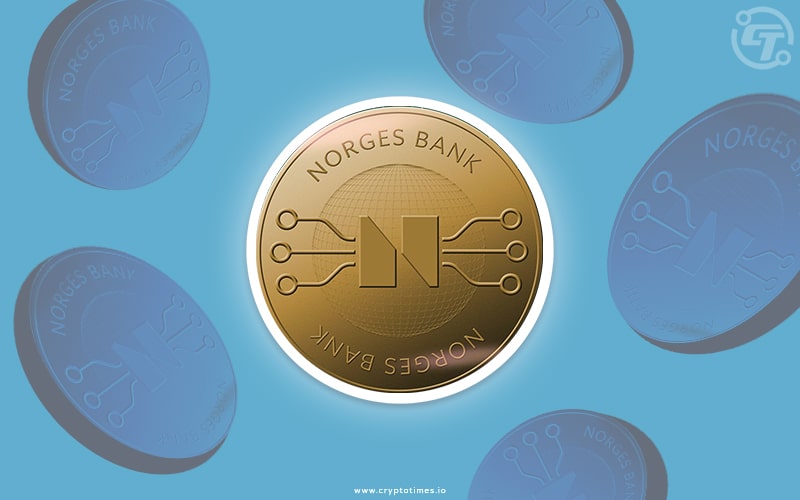Norway’s central bank, The Norges Bank, stated that Norway’s central bank digital currency (CBDC) prototype infrastructure is based on Ethereum technology.
According to the Norges Bank, the Ethereum cryptocurrency system is anticipated to offer a “core infrastructure” for the “issuance, distribution, and destruction” of digital central bank money, or DSP.
The Norges Bank stated that the prototype would be used to test a number of key features for DSP.
The Norwegian central bank formally declared its intention to carry out CBDC tests in April last year. The bank anticipated that it would have identified a suitable CBDC option after two years of testing various designs.
The bank noted that interoperability was one of the most crucial concerns while assessing various technical solutions in a working paper referring to potential CBDC architectures, including those based on blockchains like Ethereum, Bitcoin and Bitcoin SV.
With the release of the open source code for the nation’s CBDC sandbox, the central bank has now achieved a major triumph in its digital currency initiatives.
According to Nahmii, the Norges Bank’s official CBDC partner, the sandbox accessible on GitHub, was created to provide a user interface for engaging with the test network, enabling features like minting, burning and transferring ERC-20 tokens.
The Norges Bank sandbox comprises a unique frontend, network monitoring tools like BlockScout and Grafana, and the necessary smart contracts and access controls. A filterable overview of network transactions is also displayed in the frontend.
The sandbox frontend, which was written in React, is intended to provide a simple and user-friendly interface for interacting with the test network. There is role-based access control in place for crucial operations like token creation and burning.
This version of the code was not intended to support MetaMask and is only suited for keystore files.
Users with the proper credentials are the only ones who may access the present version of the Norges Bank sandbox network, which is protected by basic authentication. As a result, transactions on the test network are private.
More complicated and intriguing use cases, like batch payments, security tokens and bridges, will be incorporated into future sandbox development.
By mid-September, Nahmii wants to hand off the second phase of the project to Norges Bank, and shortly after that, they anticipate making the source code available publicly.
The CBDC sandbox code can be interacted in two different ways. First, Lasse Meholm at Norges Bank can provide access to the complete CBDC environment upon request. Second, using their code and the default Docker images available, anyone may launch a standalone instance of the sandbox.
“Nahmii AS are proud to be working with Norges Bank and other institutions on this prestigious project and hope that our work together will help to set new standards for public-private partnerships” the blog post noted.
This revelation from the Norwegian central bank comes at a time when an IMF report said there are 100 CBDCs as of July 2022. According to the IMF, out of these 15 CBDCs are still in the testing phase. 65 nations are still conducting research on theirs, while 15 more are already in the Proof-of-concept phase.






